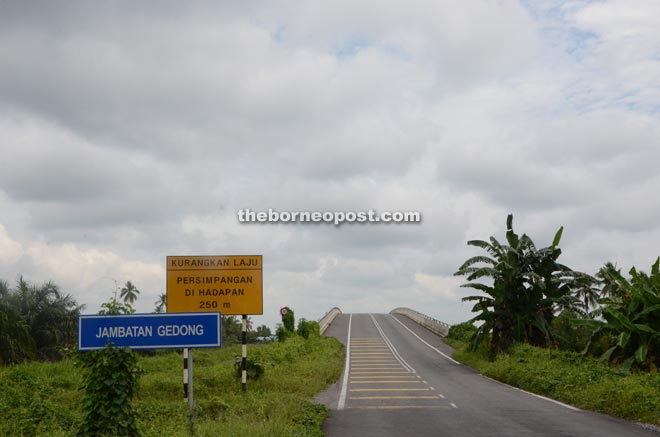
The sign indicates motorists of the Gedong Bridge upfront, which crosses Sungai Sageng and connects with Simunjan town.
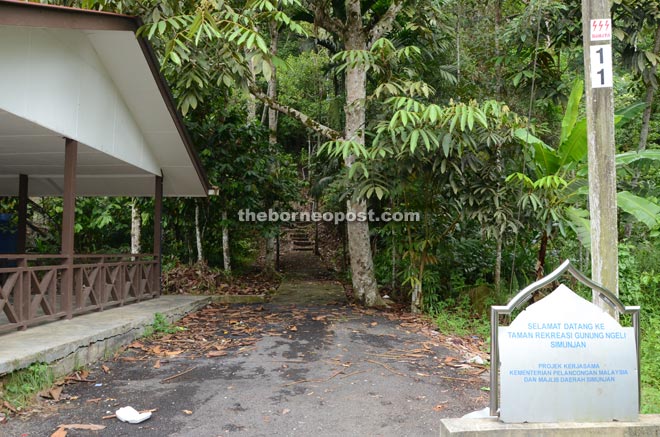
The trail up Gunung Ngeli begins here. The recreational park needs some sprucing up for it to become a tourism hotspot in Simunjan.
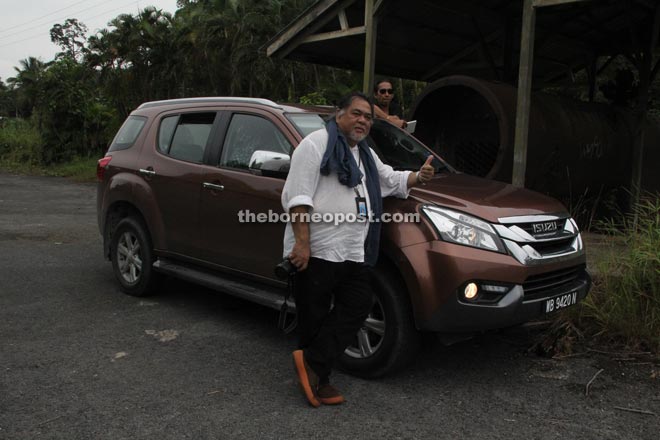
The Borneo Post adventurers pose next to their Isuzu MU-X. Behind them is the historic steam engine – one of the remnants of the town’s post-WWII coal-mining days.
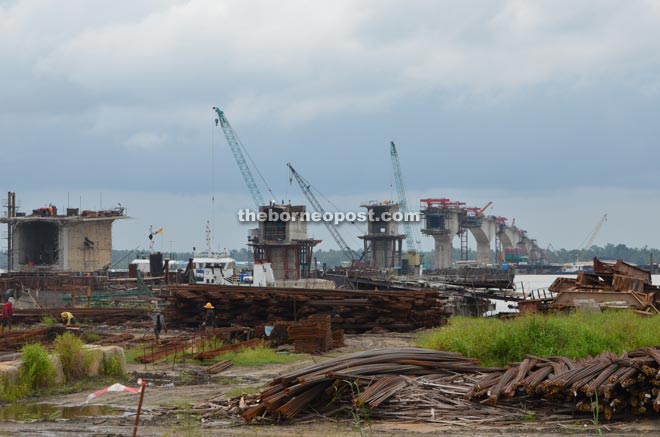
Works on the Batang Sadong Bridge, connecting Simunjan town with Kota Samarahan, in progress.
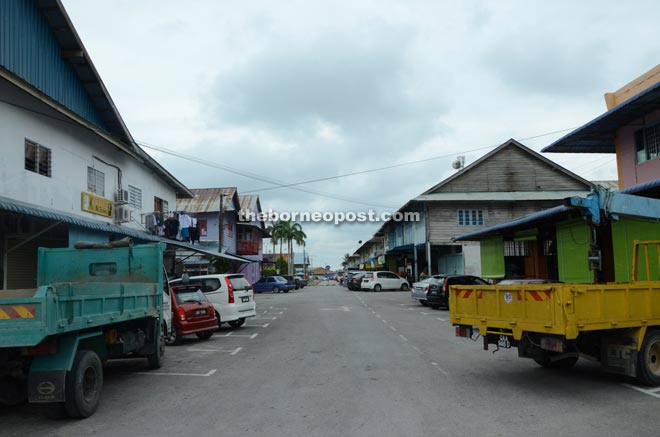
Wooden shophouses line the streets of Simunjan town.
SIMUNJAN: This coastal town, 176 km from Kuching – or 103km via Gedong, is now less than two hours’ drive by road from the state capital.
In hindsight, the journey could be even faster if the speed limit is no obstruction to high-powered wheels, not least in the Isuzu MU-X on our road test.
There are three ways to reach the town that lies between Serian and Sri Aman – it is very accessible by roads from Kuching-Kota Samarahan via Sadong Jaya, Kuching-Gedong junction, or from KM112 Kuching-Sri Aman Road.
We left Kuching at 11.30am yesterday and arrived at Gedong Bridge along Gedong Road by 12.45pm, and from Gedong bridge to Simunjan Bridge, it took another 15 minutes. From the Simunjan Bridge, the coastal town is just 2km further.
The only ‘slowdown’ in the journey now was widening of the main road in some parts to Gedong town, which looked like a much-awaited infrastructure project.
The ‘wavy’ Gedong Road definitely needs repairs or widening (currently with two lanes tightly hugged by shrubbery), although the suspension of the MU-X ‘saved’ us throughout the rocky ‘roller-coaster’ ride.
After an hour’s drive from Kuching, we reached Gedong Bridge crossing Sungai Sageng and 15 minutes later, we arrived at the Simunjan Bridge – some 2km from the town.
The landscape between the two bridges is very flat, with miles around cleared for oil palm plantations.
Across the bridge are Malay villages.
We turned left to the town 2km from the bridge to the left. It was nice to see civilisation again.
The 2km ride reflected the everyday lives of the local folk – schoolchildren walking under the afternoon sun, men sitting on the veranda watching time go by and Muslim cemetery plots being tucked in between houses.
A shopkeeper told us that the town got its name from the thriving coal mining community just before World War II (WWII) in late 1930s or early 1940s. He said the miners wanted to use the coal to cook meals and very often, the minerals would become damp due to the tropical rain. The damp coal was called ‘arang simun’ by Malay miners, due to the ‘hu-jan’ (rain). The combination of ‘simun’ and ‘jan’ is said to have given birth to the town’s name.
Another version came from damp tobacco a Chinese trader sold to a Malay chap, who told the former it had to be dried. Hence, the name ‘Simunjan’ generated from damp tobacco! Damp in Malay is ‘simun’ while tobacco in Chinese is pronounced as ‘jan’.
The town, which still has old wooden houses, was a thriving trading post in the 60s and 70s but with development ushering new road infrastructure, it is slowly turning into a sunset trade.
“People here now get out to other towns to buy goods and we do not see the same volume as before,” a local shop owner lamented.
Despite such setback, the town is expected to one day again be transformed, as 25 acres of land have been approved by the state government for the development of a new township .
There is also a tourism potential 10 minutes away, in the form of ‘Gunung Ngeli Recreational Park’ and a steam (locomotive) train engine — a modern relic of the coal mining days that could whip up any historian’s interest.
It is learnt that the government would turn this area to an ‘Agropolis’ (City of Agriculture).
On our way to leave the twon, we took the new coastal road connecting with Kota Samarahan and back to Kuching. After 20 minutes alongside the mighty Batang Sadong, we got a bit lost due to lack of signage until we reached the ferry crossing, where you could see ongoing construction of the new Batang Sadong Bridge at Kampung Buloh.
The project looks to complete on schedule by July next year, slated towards bringing this town nearer to its administrative centre.
We arrived at Kampung Buloh ferry point, where Kuching city would be just another 72km.
